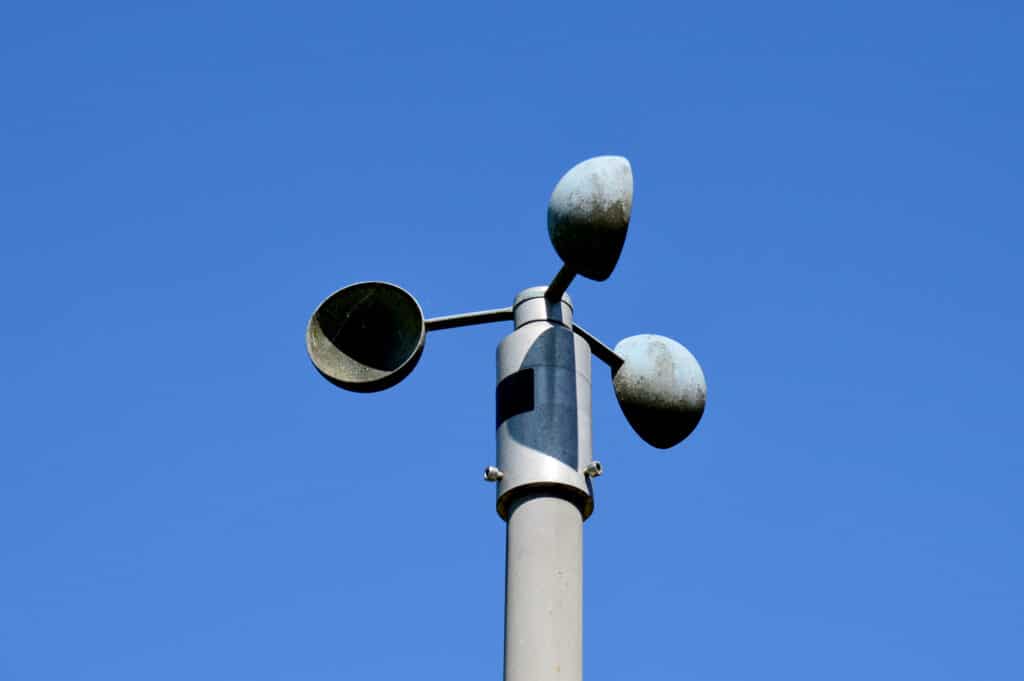Leading Functions to Search For in a Reliable Anemometer for Accurate Wind Measurement
All You Required to Know Concerning Anemometers: Just How They Function, Why They Issue, and Where to Utilize Them
Anemometers, though commonly forgotten in the realm of clinical instruments, play a critical function in various areas, offering valuable understandings right into wind rate and air flow patterns. Understanding the mechanics behind these devices is important for any individual seeking to harness the power of this information. From meteorologists tracking weather condition patterns to designers designing frameworks with wind lots in mind, the applications of anemometers are varied and significant. As we delve right into the intricacies of anemometer modern technology, we will certainly reveal the inner functions of these devices, their relevance, and the crucial considerations when choosing the ideal anemometer for specific applications.

Anemometer Basics
A vital instrument used to measure wind rate and instructions, the anemometer plays a critical role in weather forecasting and various markets. An anemometer normally includes three or 4 mugs that revolve in the wind, a vane that directs into the wind, and sensors to track the activities or turnings. By determining the turnings or motions over a specific amount of time, the anemometer can determine wind rate. The vane aids identify wind instructions by pointing right into the wind, giving important data for climate forecasting, aeronautics, maritime procedures, ecological surveillance, and wind energy applications.
There are numerous kinds of anemometers readily available, including cup anemometers, vane anemometers, hot-wire anemometers, and sonic anemometers, each with its unique features and applications. Mug anemometers are commonly utilized for fundamental wind speed dimensions, while vane anemometers are liked for directional measurements. Hot-wire anemometers appropriate for low airspeeds, and sonic anemometers are excellent for high-precision measurements in study and industrial settings. Understanding the fundamentals of anemometers is essential for exact wind data collection and analysis across various markets.
Principles of Anemometer Operation
Building on the fundamental understanding of anemometer fundamentals, the principles of anemometer procedure illuminate the mechanics behind wind speed and direction dimensions. Cup anemometers, for circumstances, have 3 or even more mugs that catch the wind, creating them to rotate quicker as the wind speed rises. Hot-wire anemometers rely on a warmed wire that cools down as wind passes over it, with the rate of cooling identifying the wind speed.
Value of Anemometers
The importance of anemometers in weather forecasting and different markets can not be overemphasized. Anemometers play a vital duty in gauging wind rate and instructions, supplying essential data for climate forecasting, climate studies, environmental monitoring, and air travel operations. Meteorologists rely upon anemometers to gather precise wind information, helping them recognize climate patterns, forecast tornados, and issue timely warnings to the public. In sectors such as building, agriculture, eco-friendly energy, and maritime operations, anemometers are used to enhance processes, make certain safety, and raise performance. Wind ranch drivers use anemometers to examine wind conditions and make the most of electrical power production from wind turbines. In the maritime field, anemometers aid ship navigation by giving real-time wind information to captains, assisting them make informed decisions to guarantee secure trips. On the whole, anemometers are important tools that add substantially to security, performance, and informed decision-making in meteorology and a wide variety of sectors.
Applications Across Various Industries
Applications of click to read more anemometers cover throughout diverse sectors, showcasing their versatility and energy past weather forecasting. In the renewable resource sector, anemometers play an important function in evaluating wind problems for wind ranch placements, making sure optimum power manufacturing. Industries like building and mining use anemometers to check wind rates, critical for safety methods, especially when operating at elevations or in open-pit mines where solid winds can pose risks. Anemometers are likewise indispensable in the air travel sector, helping pilots in comprehending airspeed and wind direction for risk-free liftoffs and touchdowns. The maritime industry gain from anemometers for ship navigation, aiding seafarers expect weather modifications and readjust courses as necessary. In agriculture, anemometers help farmers in handling plant spraying by providing real-time information on wind speed to avoid drift. Anemometers discover applications in A/c systems to optimize airflow and enhance power effectiveness in structures. The varied usage instances of anemometers highlight their importance across numerous sectors, highlighting their vital role in boosting operational safety and Going Here effectiveness (anemometer).

Choosing the Right Anemometer for Your Requirements
For general objectives, a cup anemometer is ideal for gauging wind rate, while a vane anemometer offers wind instructions information. Hot-wire anemometers are perfect for reduced airspeed measurements, and ultrasonic anemometers supply high precision and durability.

Conclusion
In conclusion, anemometers play a critical role in gauging wind speed and instructions throughout different markets. It is essential to consider the relevance of anemometers in order to make educated choices when picking the most ideal tool for measuring wind problems.
There are various kinds of anemometers offered, consisting of cup anemometers, vane anemometers, hot-wire anemometers, and sonic anemometers, each with its special functions and applications. Mug anemometers are generally utilized for fundamental wind speed measurements, while vane anemometers are favored for directional dimensions. Hot-wire anemometers are suitable for reduced airspeeds, and sonic anemometers are official website excellent for high-precision dimensions in study and industrial settings.Structure on the fundamental understanding of anemometer essentials, the principles of anemometer procedure illuminate the technicians behind wind rate and instructions dimensions. For general functions, a cup anemometer is suitable for measuring wind speed, while a vane anemometer offers wind instructions data.